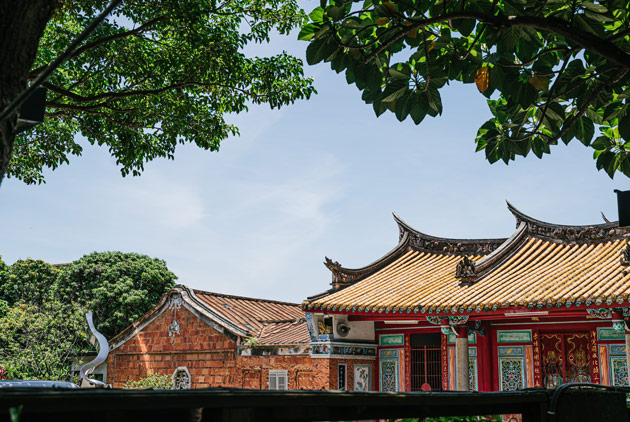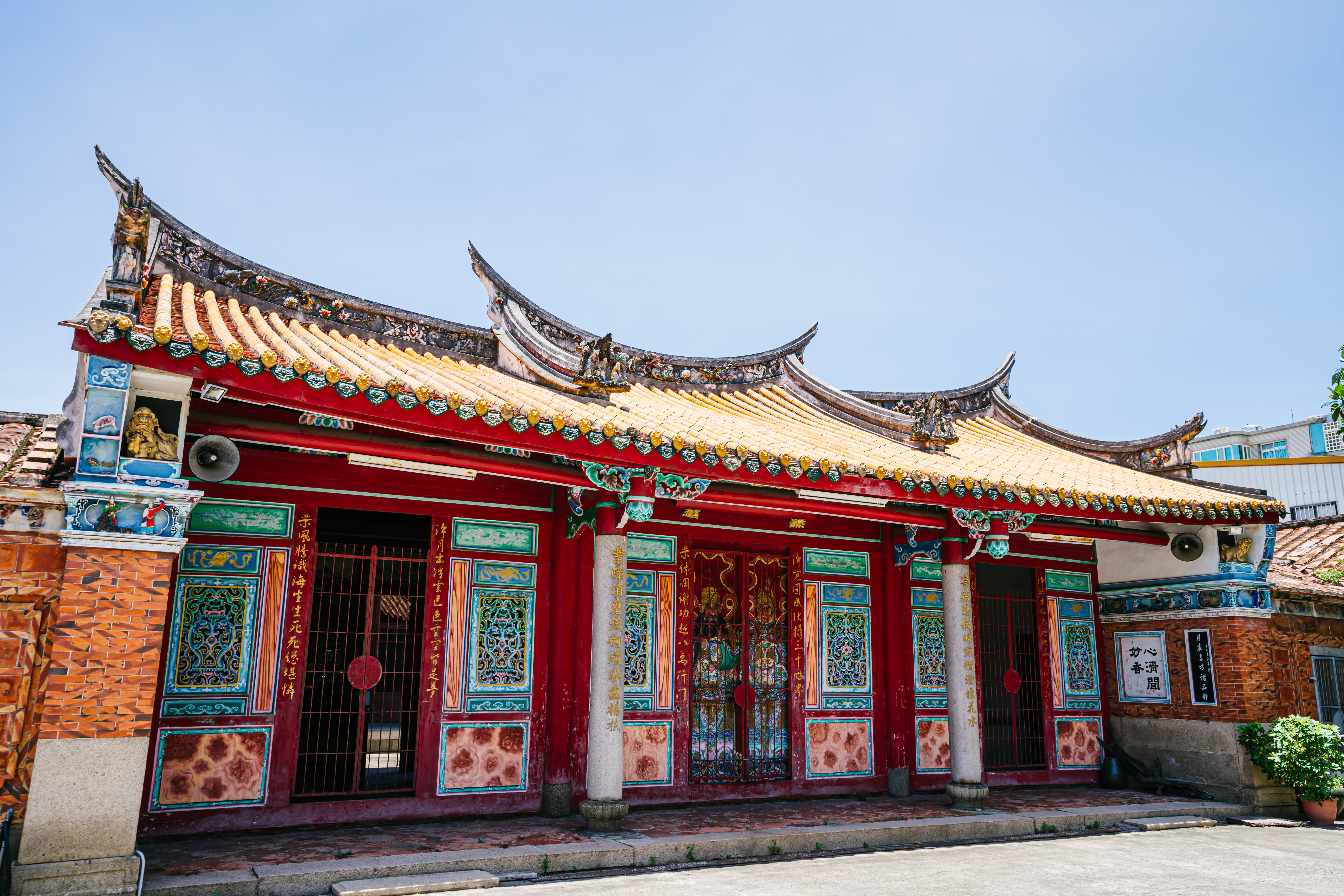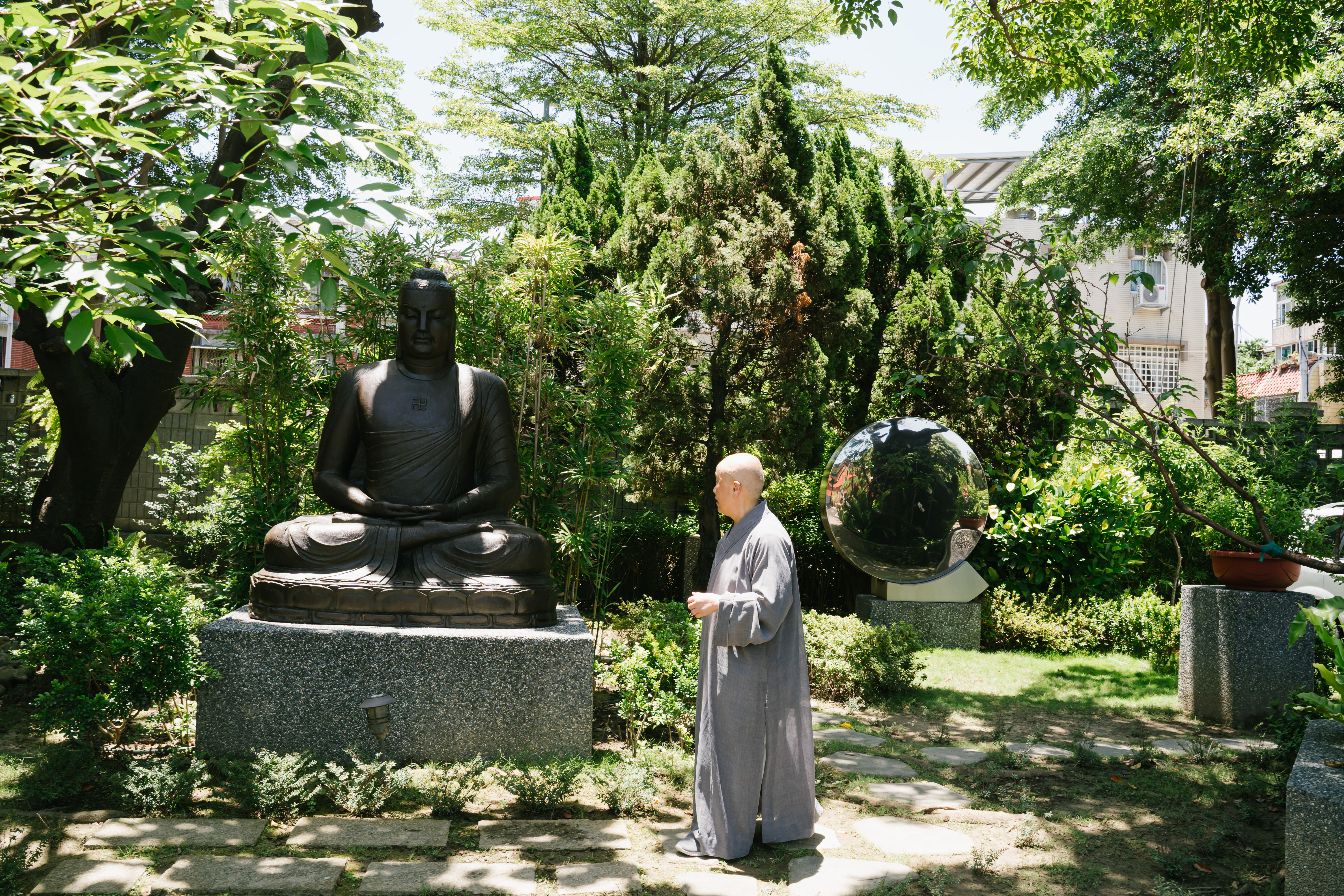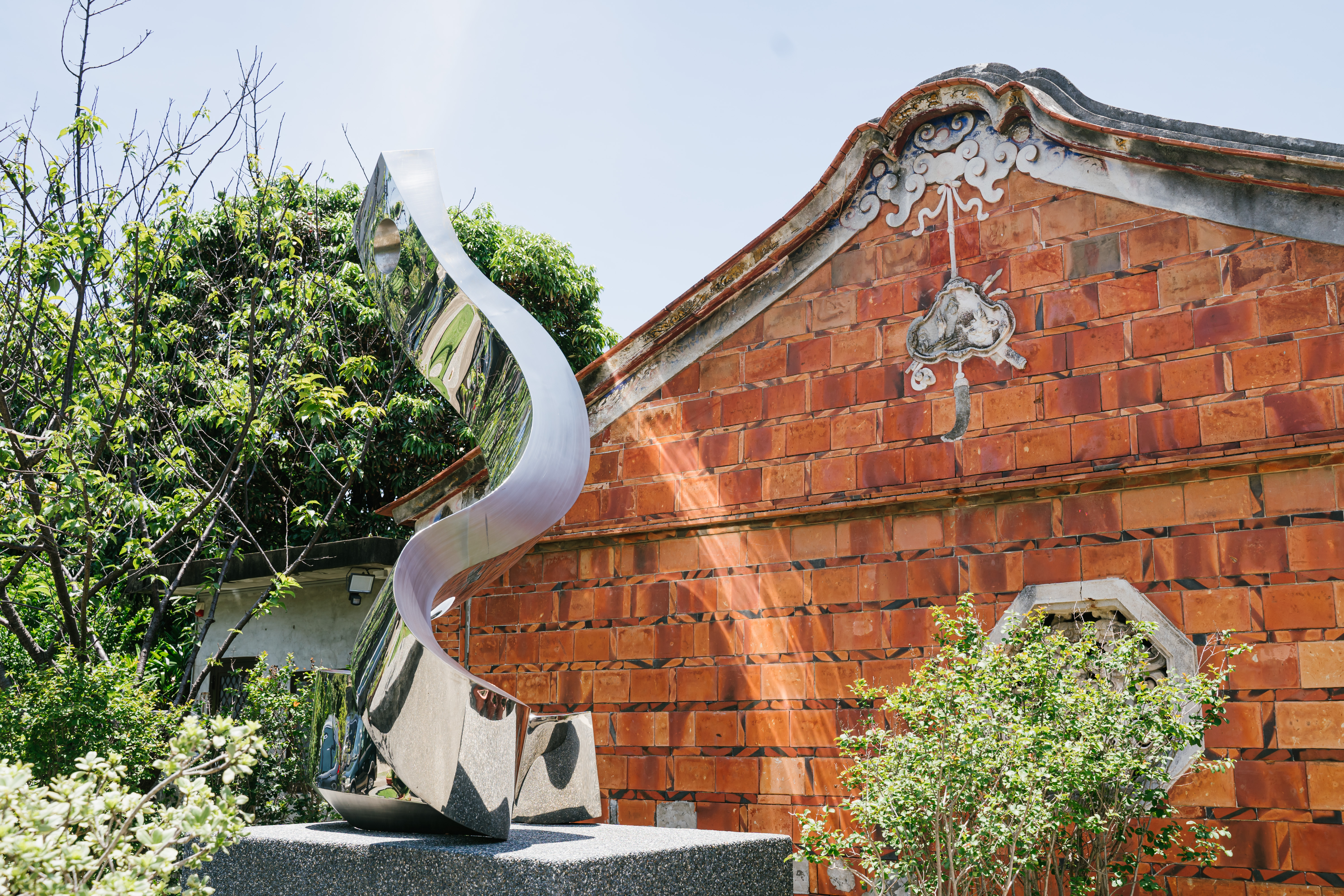Hsinchu City
Yong-Xiu Temple

Source:Chang Chieh-tsung
Seek no further as you enter the Yong-Xiu Temple.Tucked away in a quiet corner of the city, it is surprisingly and conveniently located at the heart and center of one of Hsinchu’s busy districts. Under the guardianship of abbess Master Kuan Chien, it has become an educational space blending the extracts of art and Buddhism.It is a place of comfort for many people, offering tea, floral banquets, and melodic sounds drifting from the piano.
Views
Yong-Xiu Temple
By Chang Ya-linSponsored Content
Step into Contemporary Art in a Century-old Monument
The Yong-Xiu Temple, a ten-minute drive from Hsinchu Railway Station, is separated from the railroad by a wall, shielding it away from the hustle and bustle of the city and defining what it means to find "peace within the noise.”
In the 3,000-square-meter courtyard, the old trees in the front hide amongst shadows, and the fruits and vegetables in the backyard grow abundantly. Master Kuan Chien revealed that upon the craftsmen trimming the flowers and trees, he had remarked, “This is not a garden but a forest!"
All of this is actually an encounter between a century-old monument and contemporary art. Adjacent to the Yong-Xiu Temple is the Jing Ye Temple, an ancient temple where the master herself practices. Designated as a municipal heritage site in 2018, its ancient architectural beauty can only be appreciated from the outside as it is not open to the general public.

The courtyard is like a sculpture park with rarely-seen Buddhist sculptures and works of renowned Taiwanese sculptor Yuyu Yang scattered throughout. This space integrating art and Dharma was born from the collaboration and contribution of both Yuyu Yang’s youngest daughter and Yong-Xiu Temple’s abbess Master Kuan Chien.

Growing up with Buddhism as a Child
Master Kuan Chien pointed her finger at a statue of Sakyamuni. She laughed and said that when she was young, several children would often sit and crawl on top. "We grew up with the Buddha statue." Next to it, the stainless steel sculpture "Yue Ming" resembles a full moon. As a young child, Yuyu Yang’s parents left for China to work and entrusted relatives in Yilan to care for him.
At the time, his mother comforted him saying, “You can see the moon here, and Mom can see the moon there. We can see the same moon. From time to time, Mom is looking at you in the moon.” These pure, clear works are highly worthy of viewing and admiration. When placed in the temple, it gives the ingenious, enlightened feeling of "the body as a bodhi tree and the heart as a mirror."

Bronze Statue of Guanyin: Seeking Knowledge
The bronze statue of Guanyin located at the entrance is the work of Yuyu Yang dating from 1989. Originally only one meter high, it was enlarged to present to the public.
This Guanyin statue has the high-hair bun and Yingluo-like figure of the Tian Long Mountain Bodhisattva statue of the Tang dynasty, the body and limbs of the prosperous Tang Dynasty, and the half-sitting style of the Song Dynasty (one foot hanging and one foot up). In its hands are a bottle and a flower, and a dragon-riding tortoise from the Ming and Qing dynasties, all featuring religious solemnity and artistic beauty.
While observing the statue of Avalokitesvara Bodhisattva, one will notice there is often a lovely boy "Sudhanakumāra" beside him.
Although the word "good fortune" is often quoted in secular culture and converted into the god of wealth, the allusion comes from the "Huayan Sutra," explaining that a boy with good fortune seeks the way of the Bodhisattva and embarks on the adventure of all kinds of knowledge. Master Kuan Chien has displayed the bronze statues here with only one motive in mind: "My hope is that everyone can be like this boy in his innocence and everlasting desire to learn.”

Dunhuang Mogao Caves: Reproduced Classics
There is a small house in the courtyard of the Yong-Xiu Temple. Upon first glance, people may not know that upon entering, there actually exists a cave.
Inside is an elaborate Buddhist cave built according to the size of the Dunhuang Mogao Caves, housing a collection of the most classic murals, clay sculptures, Buddhist altars, and intricate ceilings. The origin of this large-scale art installation was due to Master Kuan Chien and other literary history experts’ visit to the Mogao Caves in Dunhuang in 1989. Her travel companion, Wu Wen-cheng, chairman of the Lu Ye Yuan Art and Literature Association, was deeply shocked and vowed to recreate the caves in Taiwan.
Afterwards, the chairman went back and forth to Dunhuang several times, asking local painters to repair and recreate the art in digital form.
Because of its age, many faded and peeling murals had to be verified by experts in literature and history and compared with contemporary techniques and styles. Statues had to be changed using modern materials, hollowed out, and painted as is. The whole construction took nearly two decades to complete, with the chairman even selling off his own residence in order to afford the expenses.
Although the paintings and statues were purchased back by an artist, you can still get a glimpse of the enchanting printed portraits kept within the space of the Buddhist cave.
Master Kuan Chien remarked that the “Jingbian Buddhist illustrations" are forms of paintings that use lively, religious images to express Buddhist scripture stories. The Buddhist cave houses three Tang Dynasty sutra paintings from the 220th cave of the Dunhuang Mogao caves. The scenes are magnificent, and its art reveals the Tang people’s plumpness as beauty. She even jokes that “If you look closely, you can see how each beard is combed carefully and without knots,” showing just how delicate and smooth the brushwork is.
Take a Buddhist Art Class
Since 2007, Yong-Xiu Temple has held a Buddhist art camp every year, inviting experts and scholars to give lectures going back to the Tang, Ming and Qing dynasties, and leading people to gradually understand the beauty of ancient Buddhist art.
Li Ching-lin, the curator of Hsinchu 241 Art Gallery, originally became drawn to the Yong-Xiu Temple through information about their camp. He pointed out that religious and artistic expressions of ancient and modern China and other foreign countries can enlighten us on the development of art. Through in-depth courses, the public can become closer to Buddhist culture using an artistic perspective.
Master Kuan Chien added that due to the large number of people, the seminar camp has been looking for another suitable venue in Taipei over the years. “I was even invited to Hong Kong to hold it once. It definitely has a solid reputation." Not only has she led people reading thousands of books, she has also taken students to travel thousands of miles by introducing them to the four famous mountains of Buddhism often read about only in books. Upon discussing taking students on a real tour of the sacred pilgrimage road, she smiles and says, "Our packaged itineraries sell out within seconds."

Getting There・Yong-Xiu Temple
Take Bus Blue15 at the station located in front of the Hsinchu Railway Station towards Nanliao and get off at "Post Office Station."
Get off at Hsinchu Interchange on National Highway No. 1, proceed along Guangfu Road towards the city, and connect to the railway road via Dongda Road. Take the No. 68 Expressway, get off at Wuling Road Interchange, go straight along Wuling Road, turn right on Dongda Road, then turn left to the railway road, and you will arrive at Yong-Xiu Temple on Jing Fu Street.
Yong-Xiu Temple & Jing Ye Temple
No. 10, Ln. 141, Jingfu St., North Dist., Hsinchu City 300, Taiwan
03-5323132






